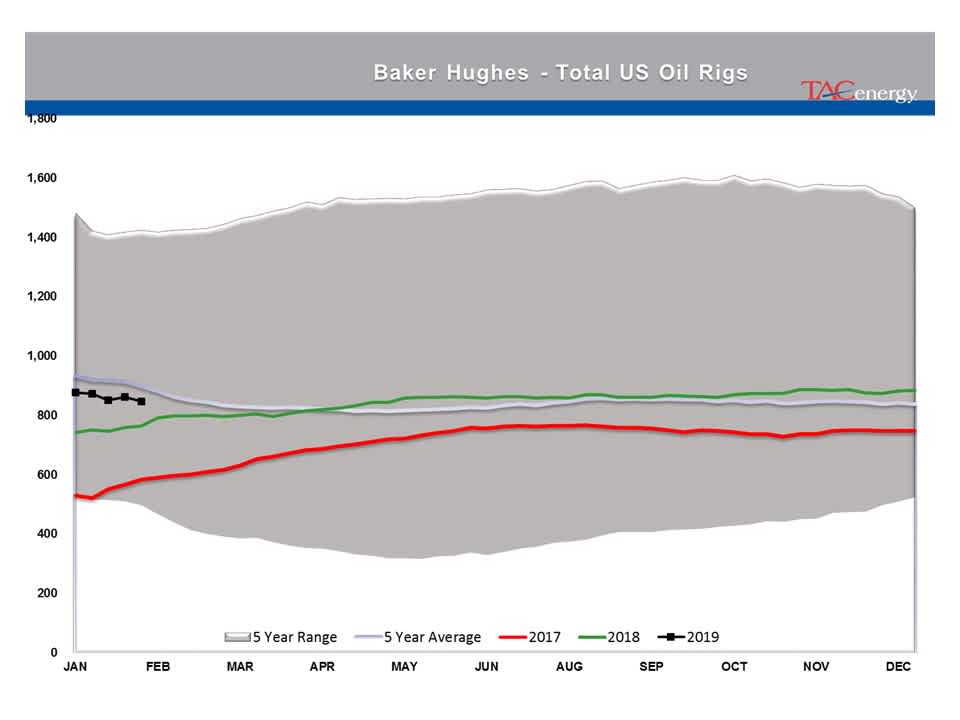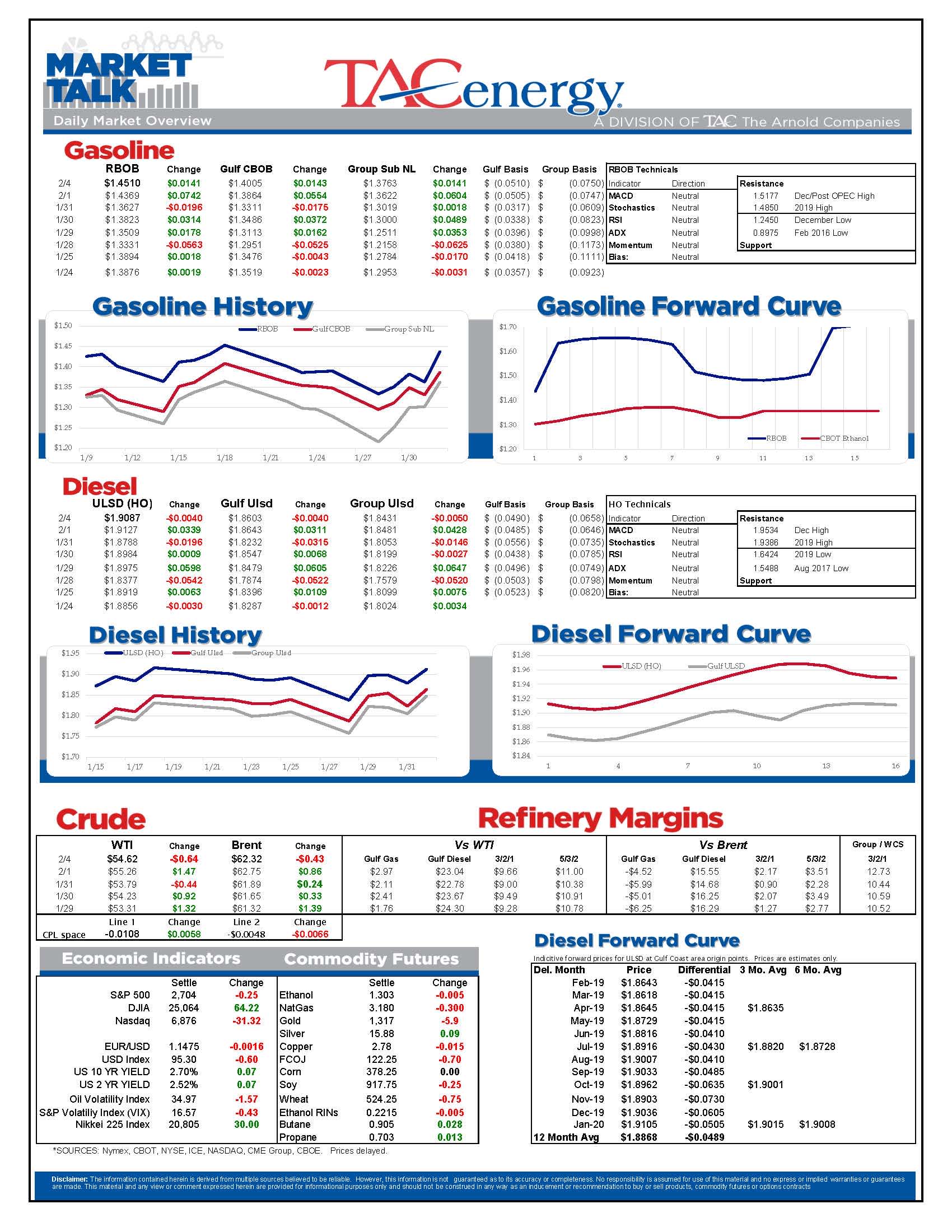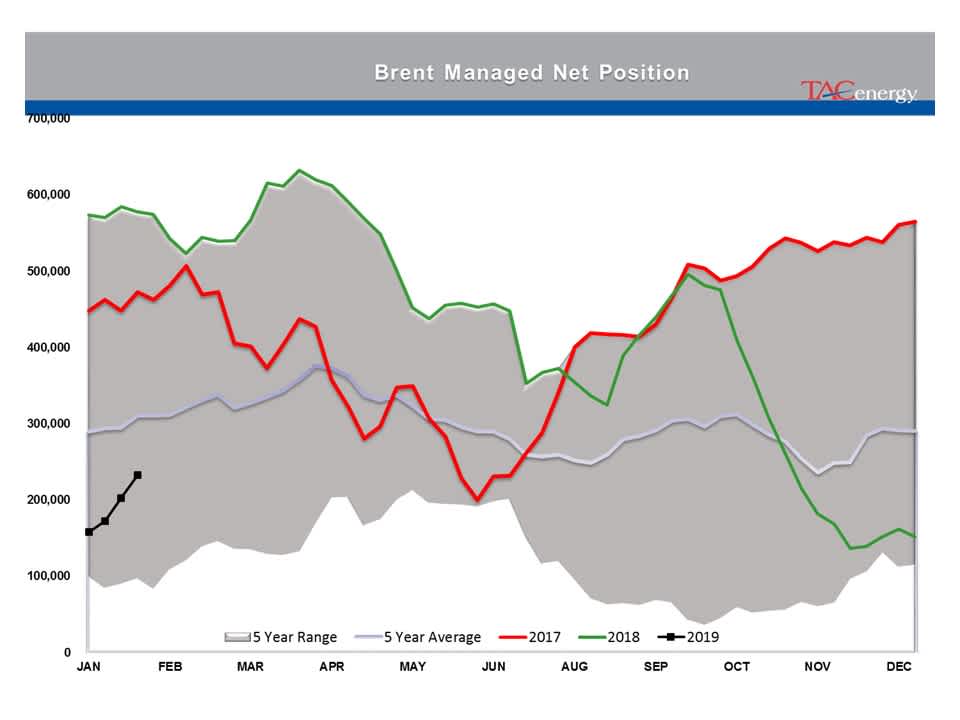Petroleum Complex Selling Off

Most of the petroleum complex is selling off Monday morning, reversing course after a strong Friday finish and overnight gains had pushed prices to their highs of the year so far and set the stage for a big move higher. It’s not clear what’s driving the reversal sell-off this morning, but it could simply be that fears over sanctions and a rash of refinery problems had pushed prices too high too fast.
After a week filled with numerous refinery issues – most due to the extreme cold temperatures – a pair of refinery fires Sunday (one in Toledo OH and the other in Delaware City DE, both happen to be PBF plants) gave gasoline prices more reason to continue their run.
March RBOB futures spiked nearly a nickel when trading started Sunday night, marking an 11 cent increase since Friday morning, but have since given back all of their overnight gains. It’s always a challenge determining what type of a market impact unplanned refinery issues will have, but based on the price reaction so far, it doesn’t seem like either of the weekend fires will create long-term disruptions.
There is still a great deal of consternation about Citgo’s outlook in the short & long term. The Treasury issued notes on Friday clarifying the sanction rules for US-based bondholders of Citgo’s debt, and for purchasers of PDVSA crude (of which Citgo is one of the largest). Long story short, US companies can continue buying Venezuelan crude for 3 more months, as long as the funds go into blocked accounts.
Citgo meanwhile is denying claims that it’s considering bankruptcy in order to continue operating in the US, and by some accounts may soon find itself flush with cash since the funds it generates in the US are not able to be repatriated to Venezuela.
The CFTC announced last week that it would publish 2 Commitments of Traders reports each week to catch up from the time missed during the government shutdown. So, last Friday’s COT report showed data from the week of Christmas and we won’t get current reports for another few weeks. The ICE COT reports continue to be published however, and speculators continue to return to the oil market with net length held by money managers increasing for a 4th straight week.
Baker Hughes reported a decline of 15 oil rigs last week, bringing the US total rig count to its lowest level since last May. Texas and Oklahoma accounted for about half of the decline nationwide.
News & Views
View All
Energy Futures Are Caught Up In Headline Tug-O-War This Morning
Energy futures are caught up in headline tug-o-war this morning with Canadian oil production concerns and a positive US GDP report trying to push prices higher while sinking Chinese demand worries and Gaza ceasefire hopes are applying downward pressure. The latter two seem to be favored more so far this morning with WTI and Brent crude oil futures down ~45 cents per barrel, while gasoline and diesel prices are down about half a cent and two cents, respectively.
No news is good news? Chicago gasoline prices dropped nearly 30 cents yesterday, despite there not being any update on Exxon’s Joliet refinery after further damage was discovered Wednesday. Its tough to say if traders have realized the supply situation isn’t as bad as originally thought or if this historically volatile market is just being itself (aka ‘Chicago being Chicago’).
The rain isn’t letting up along the Texas Gulf Coast today and is forecasted to carry on through the weekend. While much of the greater Houston area is under flood watch, only two refineries are within the (more serious) flood warning area: Marathon’s Galveston Bay and Valero’s Texas City refineries. However, notification that more work is needed at Phillip’s 66 Borger refinery (up in the panhandle) is the only filing we’ve seen come through the TECQ, so far.
Premiums over the tariff on Colonial’s Line 1 (aka linespace value) returned to zero yesterday, and actually traded in the negatives, after its extended run of positive values atypical of this time of year. Line 1’s counterpart, Line 2, which carries distillates from Houston to Greensboro NC, has traded at a discount so far this year, due to the healthy, if not over-, supply of diesel along the eastern seaboard.
Click here to download a PDF of today's TACenergy Market Talk.

WTI And Brent Crude Oil Futures Are Trading ~$1.50 Per Barrel Lower In Pre-Market Trading
The across-the-board drawdown in national energy stockpiles, as reported by the Department of Energy yesterday, stoked bullish sentiment Wednesday and prompt month gasoline, diesel, and crude oil futures published gains on the day. Those gains are being given back this morning.
The surprise rate cut by the People’s Bank of China is being blamed for the selling we are seeing in energy markets this morning. While the interest rate drop in both short- and medium-term loans won’t likely affect energy prices outright, the concern lies in the overall economic health of the world’s second largest economy and crude oil consumer. Prompt month WTI and Brent crude oil futures are trading ~$1.50 per barrel lower in pre-market trading, gasoline and diesel are following suit, shaving off .0400-.0450 per gallon.
Chicagoland RBOB has maintained its 60-cent premium over New York prices through this morning and shows no sign of coming down any time soon. Quite the opposite in fact: the storm damage, which knocked Exxon Mobil’s Joliet refinery offline on 7/15, seems to be more extensive than initially thought, potentially extending the repair time and pushing back the expected return date.
There are three main refineries that feed the Chicago market, the impact from one of them shutting down abruptly can be seen in the charts derived from aforementioned data published by the DOE. Refinery throughput in PADD 2 dropped 183,000 barrels per day, driving gasoline stockpiles in the area down to a new 5-year seasonal low.
While it seems all is quiet on the Atlantic front (for now), America’s Refineryland is forecasted to receive non-stop rain and thunderstorms for the next four days. While it may not be as dramatic as a hurricane, flooding and power outages can shut down refineries, and cities for that matter, all the same, as we learned from Beryl.



